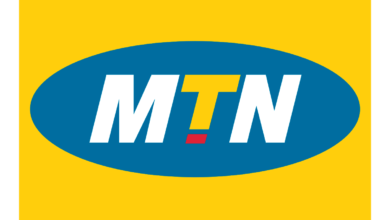Understand Google Ads From Keyword Research to Ad Creation

As a digital marketing professional, I have seen the power of Google Ads first hand. Google Ads, previously known as Google AdWords, is an online advertising platform developed by Google. It allows businesses to display ads to users who are searching for specific products or services on Google. In this guide, I will take you through everything you need to know about Google Ads, from keyword research to ad creation, to help you boost your business.
What is Google Ads
Google Ads is a paid advertising platform that allows businesses to place their ads on Google’s search engine results page (SERP), Google Maps, Google Shopping, and other Google partner websites. It is a cost-effective way for businesses to reach their target audience and increase their online visibility. With Google Ads, you can create ads that are relevant to your target audience and display them to users who are searching for specific keywords related to your business.
Benefits of advertising on Google
There are many benefits of advertising on Google. For starters, Google is the most popular search engine in the world, with over 90% of the global search engine market share. This means that advertising on Google can help you reach a massive audience. Additionally, Google Ads allows you to target your ads to specific locations, demographics, and interests, making it easier to reach your ideal customer.

Another advantage of Google Ads is that it is a cost-effective advertising method. You only pay when someone clicks on your ad, which means that you are not wasting money on ads that are not generating any clicks. Furthermore, Google Ads provides you with detailed analytics so you can track the performance of your ads and make adjustments as needed.
Google Ads vs. Google AdWords
Google Ads was previously known as Google AdWords. The platform was rebranded in 2018 to reflect the different types of ads that are available on the platform. While Google AdWords was primarily focused on search ads, Google Ads now offers a variety of ad formats, including display ads, video ads, and shopping ads.
Understanding the Google Ads interface
The Google Ads interface can be overwhelming for beginners, but it is relatively straightforward once you get the hang of it. The interface is divided into three main tabs: Campaigns, Ad Groups, and Ads. The Campaigns tab is where you create and manage your campaigns, while the Ad Groups tab is where you organize your ads by theme or product. The Ads tab is where you create and manage your ads.

One of the essential aspects of the Google Ads interface is the Quality Score. The Quality Score is a metric that measures the relevance and usefulness of your ads, keywords, and landing pages. A high-quality score can help you achieve a higher ad position and lower cost-per-click (CPC).
Keyword research for Google Ads
Keyword research is a critical component of any successful Google Ads campaign. You need to identify the keywords that your target audience is searching for and create ads that are relevant to those keywords. Google Ads provides a Keyword Planner tool that allows you to research keywords and estimate their search volume and cost-per-click.
When conducting keyword research, it is essential to focus on long-tail keywords. Long-tail keywords are more specific and have less competition, which means that they are often less expensive and more effective at generating clicks and conversions.
Creating effective Google Ads campaigns
Creating effective Google Ads campaigns requires careful planning and execution. You need to identify your target audience, set clear objectives, and create ads that are relevant and engaging. One of the essential aspects of creating effective Google Ads campaigns is ad copy. Your ad copy needs to be concise, compelling, and relevant to the keywords that you are targeting.
Another important component of creating effective Google Ads campaigns is testing. You should continually be testing different ad formats, headlines, and descriptions to see what works best for your business.
Ad creation and optimization
Ad creation and optimization are critical to the success of your Google Ads campaigns. You need to create ads that are relevant, engaging, and visually appealing. Google Ads provides a variety of ad formats, including text ads, image ads, and video ads.
When creating ads, it is essential to focus on your target audience and the keywords that you are targeting. Your ads should be tailored to the specific needs and interests of your target audience.
Optimizing your ads involves making adjustments to your ad copy, targeting, and bidding to improve their performance. You should continually be monitoring your ads’ performance and making adjustments as needed.
Managing your Google Ads budget
Managing your Google Ads budget is essential to ensure that you are getting the most out of your advertising spend. You need to set a budget that aligns with your business objectives and monitor your spending to ensure that you are not overspending.
One of the essential aspects of managing your Google Ads budget is bidding. You need to bid strategically to ensure that you are getting the best return on investment (ROI). This involves monitoring your ad performance and adjusting your bids accordingly.

Google Ads settings and targeting options
Google Ads provides a variety of settings and targeting options that allow you to reach your ideal customer. You can target your ads by location, demographics, interests, and more. Additionally, Google Ads provides a variety of ad formats, including search, display, video, and shopping ads, that allow you to reach your target audience in different ways.
Frequently asked questions about Google Ads
Here are some frequently asked questions about Google Ads:
The minimum budget for Google Ads is $1 per day.
The cost of Google Ads varies depending on your industry, keywords, and competition. You only pay when someone clicks on your ad.
You can track the performance of your Google Ads campaigns using the Google Ads dashboard. It provides detailed analytics on your ad performance, including clicks, impressions, and conversions.
Courses and resources for Google Ads
There are many courses and resources available to help you learn more about Google Ads. Google offers a variety of free courses and certifications through their Google Ads Academy. Additionally, there are many online courses and tutorials available on platforms like Udemy and Coursera.
Conclusion
Google Ads is a powerful advertising platform that can help you reach your target audience and increase your online visibility. By following the tips and strategies outlined in this guide, you can create effective Google Ads campaigns that drive clicks and conversions. Remember to focus on keyword research, ad creation, and optimization to ensure that your ads are relevant and engaging to your target audience. And don’t forget to monitor your spending and adjust your bids accordingly to get the best ROI.













